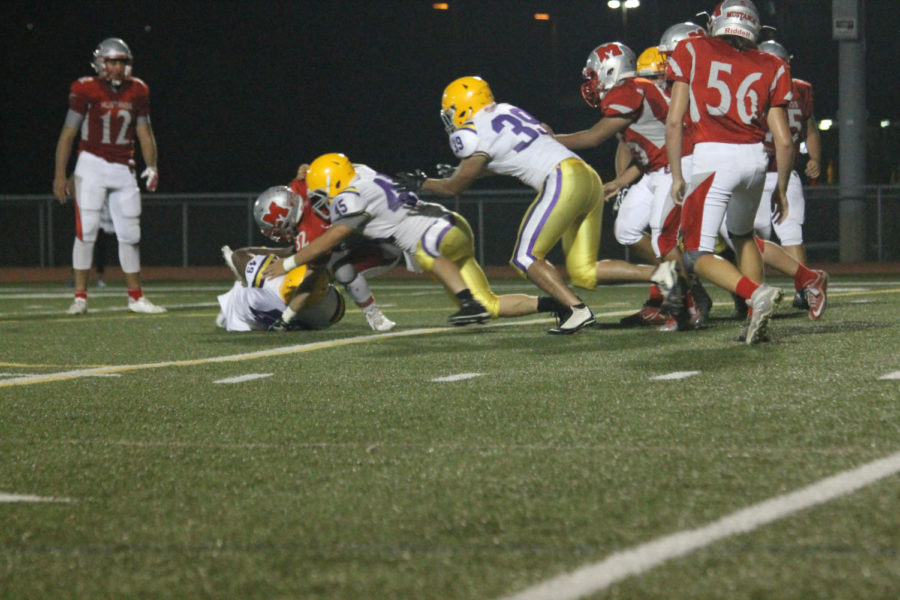Let Them Play Football
Mundelein running back Kyle Schaller gets tackled by Waukegan defenders during the Homecoming game on Sept. 22.
April 17, 2018
Football, one of the greatest American traditions still played today, has a lot to teach its players, no matter how old those players are.
“Football is a great deal like life in that it teaches that work, sacrifice, perseverance, competitive drive, selflessness and respect for authority is the price that each and every one of us must pay to achieve any goal that is worthwhile,” Vince Lombardi, former Head Coach of the Green Bay Packers, once said.
But there are people who want to get rid of all these things football can teach.
“A proposed Illinois law would ban kids under 12 from playing tackle football,” read a Jan. 25 headline from ABC News.
That very headline can be the start of destruction in the world of football.
“Kids should have the ability to play before 12,” said Nolan Seeger, senior football player.
Youth football is the thing that gets kids to love the sport. It is essential to development and to building character at a young age.
“The biggest thing I see happening with this law being passed, by the time a kid is 12, he will have found another love for a different sport and won’t even want to play football, [and that might cause the number] of athletes participating in football to plummet,” said Ryan Buck, English teacher and former football player.
Over the years, the game of football has already significantly changed. Rules have changed, the equipment used has changed and even how the game is played has changed.
Before all these changes, football was about physical toughness, grit and banging into one another with no care. Now the game is about finesse, speed and making a man miss.
Back in the very beginning of football, passing the ball was unheard of, you had 10 men blocking and one man running, fighting through a pile of men rather than running around them.
Now the concept of a spread offense has consumed each and every level of football. The spread offense is a passing-base offense where a team usually has three to four receivers out on the perimeter of the line of scrimmage.
Not only did the formations change to take away the pounding of the athletes, but the powers that be also changed the rules. For example, before a football player could hit a wide receiver in midair even if the ball was thrown too high, but now you can’t hit a wide receiver unless that athlete makes a “football move,” which is a very vague definition; this leaves the games in the hands of the referees.
These changes have taken a lot away from the physicality factor of the game, and yet people are still unsatisfied and want to take even more away from that factor.
“Football’s rules and regulations are to an extent where contact may not be allowed in the future,” said Senior Andrew Silva, an avid spectator of football.
Many people would agree with this statement. But this discussion is not just one-sided.
“I have played football my whole life, [and] with the new discoveries people have come out with….I would never let my child participate in something like that,” said Buck.
The statistics are there to rightfully be fearful for a child’s safety. Concussions make up 7.4 percent of all injuries in college football players. The preseason has the highest injury rate (9.7 per 1,000 athlete exposures) compared with in-season (7.5) and the post-season (4.2), according to the NCAA website.
“It’s a gladiator sport, and you experience a minor car crash each and every play,” said English Teacher Ernie Billittier.
This sport is very dangerous, but football is America’s pastime, and many changes have been made to make it a safer sport already. Some of those changes have been for the good and some for the bad, but at some point, it’s time to stop with the strict rules and let football be played.


